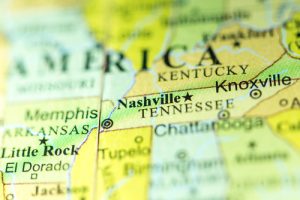 Nashville, Tenn. leaders have identified increased recycling as a key component of improving the city’s livability.
Nashville, Tenn. leaders have identified increased recycling as a key component of improving the city’s livability.
Under draft recommendations released last week, the capital of the Volunteer State would strive to raise its residential and commercial diversion rate to 35 percent in the next three years. The city would aim to hit 50 percent by 2030 and 100 percent by 2050, the “Livable Nashville” draft plan states.
Mayor Megan Barry described the plan as critical to maintaining quality of life and boosting the city’s economy, particularly given recent population growth.
“We can welcome additional jobs and people in a way that’s sustainable – but only if we intentionally guide and manage our growth,” she said in an introduction to the plan.
The city of roughly 680,000 has some work to do, hovering at 24 percent diversion right now. The plan takes a multi-pronged approach to increasing that figure.
Its proposed tactics include doubling the frequency of single-family residential curbside collection from monthly to biweekly, while exploring whether to require recycling at multi-family buildings.
The city would also look into the feasibility of collecting glass, which is not currently accepted in the curbside program, although households can hire private contractors to collect it. According to Nashville’s public works department, it hasn’t been included in the curbside program because “glass makes up a smaller portion of the waste stream than paper, plastic and metals.” But introducing curbside glass collection would give a boost to the volume of materials collected, pushing the city closer to its targets.
More public drop-off recycling centers are also proposed, especially in particularly underserved areas of the city.
Like other cities, Nashville also highlights educating the public as a priority for increased recycling. The draft plan suggests working with organizations and city leaders to educate 80 percent of third-graders, begin a wider public education campaign and specifically encourage food-waste reduction.
In the commercial sector, the plan encourages starting a glass bottle recycling program among food establishments in the downtown area. It also suggests working to reduce or eliminate single-use plastic bags as well as polystyrene in food packaging.
Construction and demolition are identified as significant waste generating activities, so the plan recommends expanding requirements for reuse and waste reduction concurrent with building permits.
Targeting food waste is a substantial focus of the waste-reduction strategy. The plan sets a goal of 10 percent food waste reduction by 2020 and 50 percent by 2030. To do so, the recommendations include looking into the development of composting and anaerobic digestion facilities, and opening up land-use regulations to allow those facilities in more zones. They also promote strategies to increase food donation, as well as the Mayor’s Restaurant Food-Saver Challenge that aims to reduce restaurant food waste.
The plan has been in the works for nearly a year, with a group of individuals representing a broad range of interests meeting over the months to discuss livability and environmental goals. Recycling and waste reduction were included among the five focus areas identified by the group, in addition to climate and energy, natural resources, mobility and green building.
Targets for waste reduction were informed by a Solid Waste Master Plan recently launched by the public works department. That document will establish long-term plans and goals. The Livable Nashville plan focuses on the next three years, aiming to bring about more immediate changes.



